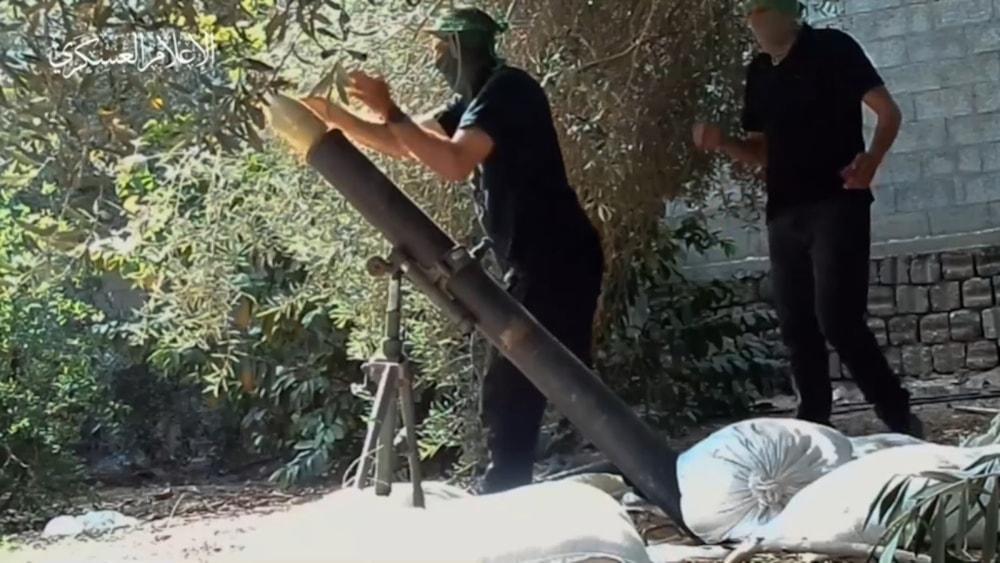
The Palestinian Resistance has intensified its targeting of the Netzarim axis, established by the occupation in north-central Gaza and considered as a dividing corridor between Gaza City and its north on one hand and between the central and southern regions of Gaza on the other.
The Martyr Izz al-Din al-Qassam Brigades, the military wing of the Hamas movement, engaged gatherings of occupation forces troops near Kibbutz Nirim using a missile barrage.
It also engaged troops at the Netzarim axis using a 114 mm short-range Rajum missile system.
Using heavy-caliber mortar shells, the brigades also engaged the headquarters of the Southern Axis command of Netzarim.
In addition, Al-Quds Brigades, the military wing of the Islamic Jihad Movement in Palestine, confirmed that its freedom fighters engaged a gathering of occupation forces troops on the supply line of the Netzarim axis, southwest of Gaza City using heavy-caliber mortar shells.
The Mujahideen Brigades, the military wing of the Palestinian Mujahideen Movement, published scenes showing how it engaged gatherings of troops at the Netzarim axis using missiles.
Within the framework of cooperation between the Palestinian resistance factions, the Martyr Omar al-Qassem Forces, the military wing of the Democratic Front for the Liberation of Palestine, in cooperation with Al-Quds Brigades engaged a gathering of troops in the Sheikh Ajlin area, southwest of Gaza City using a barrage of mortar shells.
The Martyr Omar al-Qassem Forces published scenes showing its freedom fighters controlling an quadrocopter drone amid intelligence missions east of Al-Zaytoun neighborhood, east of Gaza City on April 23.
Al-Qassam Brigades also published scenes showing rocket salvos it launched from south Lebanon towards occupation military sites in northern occupied Palestine.
The entities attempt to restore deterrence has proven failure: FP
In an opinion piece published in the Foreign Policy news website on May 1, Sajjad Safaei, a postdoc fellow at Germany’s Max Planck Institute for Social Anthropology, touched on the entities failed deterrence, especially amid the ongoing battles with the Palestinian Resistance in Gaza, the fighting with Hezbollah, and Iran’s retaliatory attack.
Safaei highlighted that since the establishment of the occupation entity, “no concept has so thoroughly dominated” its strategic imagination as much as deterrence.
He recalled that former Prime Minister Ariel Sharon once said that deterrence was the regime’s “main weapon—the fear of us,” attributing the Palestinian Resistance’s Operation Al-Aqsa Flood on October 7 for “an unprecedented existential urgency” to reestablish the regime’s deterrence, which according to the writer, “had been steadily waning since the withdrawal from Lebanon in May 2000.”
However, Safaei argued that the regime’s attempt to restore its deterrence through a war on Gaza and other skirmishes with Hezbollah and Iran has proven a failure for the occupation entity.
“The most basic reason for this failure is that a major military victory, such as decisively crippling Hamas, is still not in sight,” he explained, pointing out that the ground invasion of the Gaza Strip has faced international condemnation, and the [Zionist regime’s] military’s notably high casualties there have aggravated previous concerns regarding “the vulnerability of Israel’s land forces.”
The writer said that “none of this has communicated a message of strength to [the entities] foes—especially not to Hezbollah.”